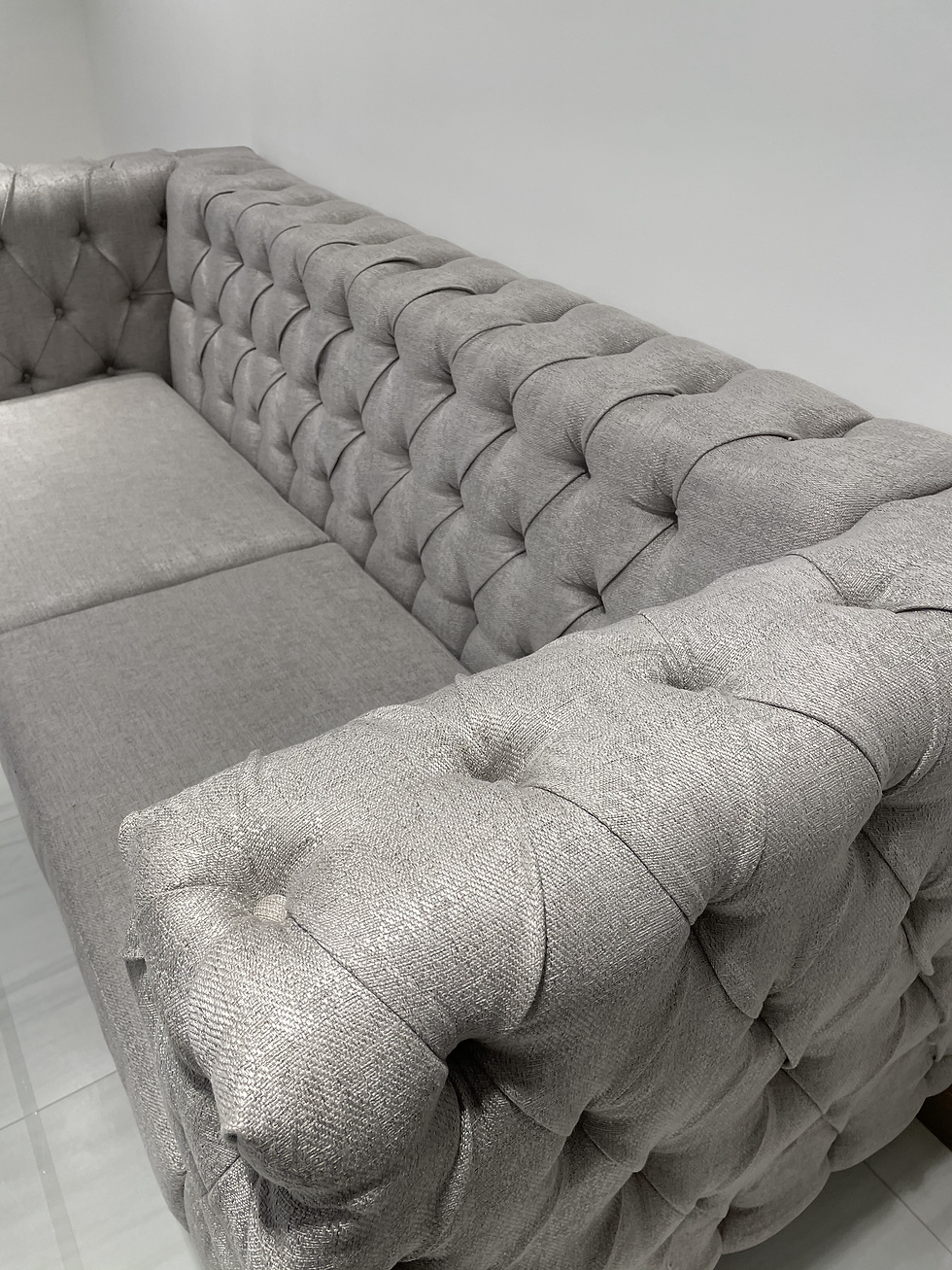You've seen it everywhere ... in classic Victorian paintings, fancy ballrooms at the movies, and even in your neighbor's living room. However, what exactly is padding? And how has it maintained its popularity in the hundreds of years since its inception? In our guide to tufted furniture, we answer these questions and more.
Upholstery has come a long way since it was first used. Modern upholstery focuses on both aesthetics and comfort and new and more durable materials have been designed to replace some of the previously used materials that no longer meet the standards of modern upholstery.
The quilting technique requires anchor points. These are placed to ensure that the foam and upholstery fit snugly in place. They must be reliably fixed to the frame perfectly.

ORIGIN OF THE TUFTING
The Tufting process rose to prominence in Victorian England. Initially used to hold the padding of mattresses, sofas and chairs in place, it eventually became a sign of wealth. Today tufted furniture is known for its comfort and versatility.
There are 5 main techniques that upholsterers use to achieve a tufted look. Although they are seemingly similar in style, each has its own unique characteristics that present a different aesthetic.

Diamonds
The most widely used technique is Diamond Tufting which, as the name implies, it consists in pulling and securing the fabric so that a diamond-like pattern is created in the upholstery.
It is also considered the most comfortable due to the additional cushioning in each pad. Sometimes pleated pleats or sewn panels are used to accentuate the look.

2. Biscuit
This technique creates a square shape instead of a diamond. The holes range from shallow to deep, creating the linear look commonly seen in modern furniture.
The square pattern can be achieved with or without buttons. Squares (cookies) or rectangles (buns) are typically 8 to 10 inches in size. Sometimes a square frame can be emphasized, showing the right angles and clean lines.
Biscuit Tufting can provide a quilt feel, with even squares. It is a clean and elegant look.

3. Button
Buttons are used in the center of each indentation to secure the quilting.
Button tufts can be easily integrated into biscuit and diamond quilting types. Although the buttons usually match the color of the fabric, you can always use another material or color to attract visual interest, such as accessories that simulate gemstones, studs, or plastic buttons.
4. Blind
This technique can basically be used with any pattern, nothing is shown holding the notch in place.
It is achieved by pulling the fabric back with a small stitch on the surface and securing it with a knot. Doing so gives you a minimalist look with no visible accents like buttons or ribbons.

5. Channel
This style has horizontal and vertical lines, instead of intersections. They are stitched to show a long fill channel between them. This provides a modern look and is a popular choice for headboards, not only providing comfort but also adding a sense of height to the piece and the room itself.
If you are looking for this style and you specifically want horizontal lines, it is always a good idea to ask specifically for "horizontal lines", as the term Channel generally implies vertical lines.
All photos used in this blog are property of Annbar





Comments